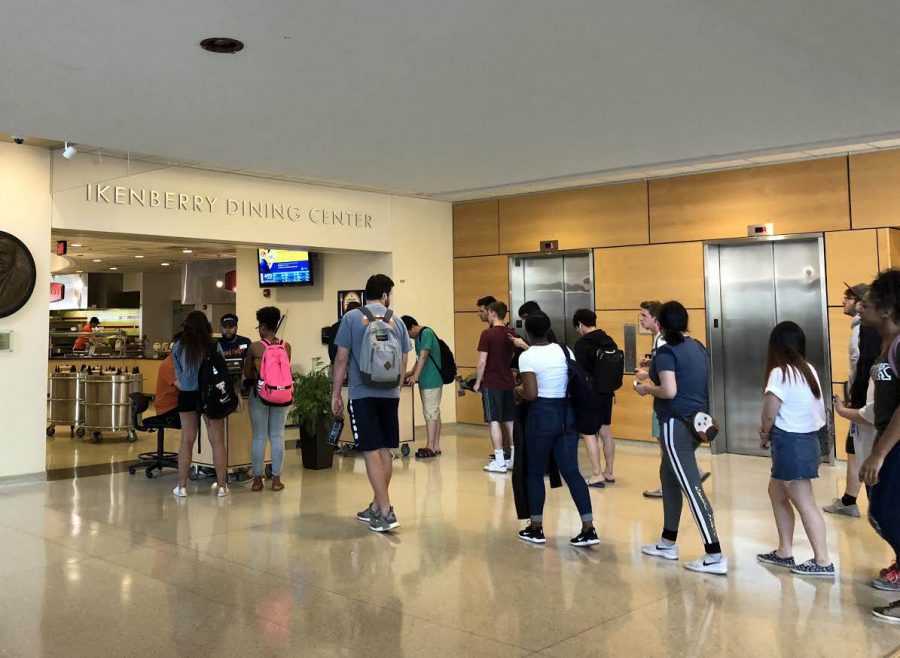Meal plans cost more than eating out every day
Students enter the Ikenberry Dining Center on May 1.
September 21, 2019
I decided to sign up for a University meal plan this semester. Then I looked into the financial details of the plan, and what I found made me think the University should consider overhauling dining hall practices.
From the perspective of personal financial, is it worth it for individuals to buy a meal plan? The cheapest plan for students who live in residence halls is the 12 meals/15 credits per week plan. This plan costs $4,630. There are 16 weeks where the meal plan is in effect per semester. This means that in total, a person receives 384 meals and $480 worth in credits.
Is this worth it? What are the alternatives? Cooking food at home is not a good comparison because of the amount of time spent making the food itself. Eating out would be the closest equivalent.
Let’s assume a person eats out and spends $9 per meal. Multiply that by the 384 meals that they could be receiving with the 12/15 plan and add $480. This number comes out to $3,936, $694 cheaper than the 12/15 meal plan.
To be fair, there is no true equivalent to University dining. It provides six different on campus locations, they have salad bars, it’s all you can eat, there are vegetarian, vegan and halal options. However, the cost is heavy enough where the University (if they have not already) needs to evaluate whether University dining is an ideal institution for students. The alternative is to eat a $9 meal on Green Street every day, which is arguably superior in quality.
Get The Daily Illini in your inbox!
Without considering alternative meal options, is University dining expensive in general? For a freshman living in a traditional, double room with no air conditioning, on the 12/15 meal plan, they can expect to spend $10,790 out of $25,000 of their expenses on room and board. A University student’s financial woes can be better traced to the big-ticket items that they are forced to purchase rather than the $5 latte at Espresso Royale. Unfortunately, students living in undergraduate halls are not given the option to opt-out of a University meal plan.
Are University dining options excessive? The all-you-can-eat buffet-style dining halls are an attractive option without thinking too much about the costs. I can eat tacos, waffles and Cinnamon Toast Crunch all in the same hour and wash it down with Cherry Coke. Is this a necessary function? Does it encourage bad behavior? Does it further contribute to the “Freshman 15”? The buffet-style dining hall offers flexibility for each person, but it may be unnecessary. Perhaps the University should consider more a-la-carte options. This may be more cost-effective than the predominant buffet option available.
At the end of the day, there are probably more economics involved with the dining halls and more nuances that need to be considered (food waste, sustainable farming, student food security, food and academic performance, University cash flows, etc.). For the time being, I will stick with my meal plan and enjoy my food with some skepticism.
David is a senior in LAS.







